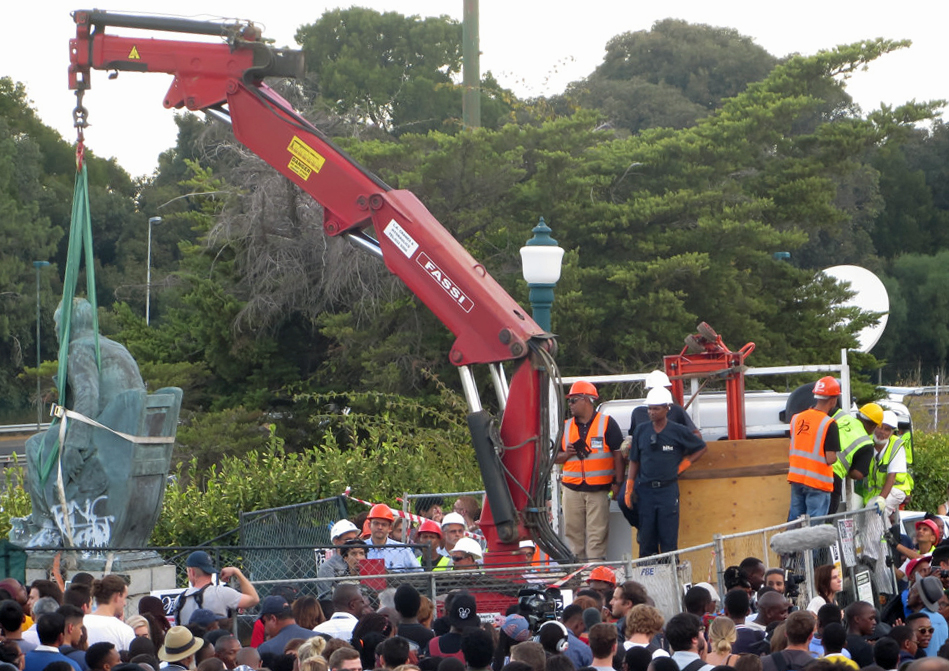University of Cape Town’s battle to tackle a racist legacy
By Linda Nordling,
Nature
| 05. 18. 2021
Photo by Tony Carr via Flickr
In 2015, a giant crane hoisted a 900-kilogram bronze statue of the imperialist Cecil John Rhodes from its plinth at the University of Cape Town (UCT) in South Africa. Rhodes — a nineteenth-century diamond magnate and a representative of the white-supremacist, colonial rule of southern Africa — had bequeathed the land on which the university now stands. The removal of his statue came two decades after South Africa’s first-ever democratic elections and the end of apartheid.
When the crane did its work, Rhodes’s likeness in front of UCT’s main hall was reeking, both figuratively and literally. A month earlier, a student had upended a bucket of human excrement over the statue, lighting the fuse of what was to become known globally as the Rhodes Must Fall movement (see ‘Of protest and potential’). Since the statue fell, UCT has played host to conversations about how to ensure that the institution — one of Africa’s foremost — embraces inclusivity at its very core.
This includes challenging its traditions, which critics argue are rooted in colonial values...
Related Articles
By Sarah A. Topol, The New York Times Magazine | 12.14.2025
The women in House 3 rarely had a chance to speak to the women in House 5, but when they did, the things they heard scared them. They didn’t actually know where House 5 was, only that it was huge...
Alice Wong, founder of the Disability Visibility Project, MacArthur Genius, liberationist, storyteller, writer, and friend of CGS, died on November 14. Alice shone a bright light on pervasive ableism in our society. She articulated how people with disabilities are limited not by an inability to do things but by systemic segregation and discrimination, the de-prioritization of accessibility, and the devaluation of their lives.
We at CGS learned so much from Alice about disability justice, which goes beyond rights...
By Nahlah Ayed, CBC Listen | 10.22.2025
Egg freezing is one of today’s fastest-growing reproductive technologies. It's seen as a kind of 'fertility insurance' for the future, but that doesn’t address today’s deeper feelings of uncertainty around parenthood, heterosexual relationships, and the reproductive path forward. In this...
By Shoumita Dasgupta, STAT | 10.03.2025
President Trump and health secretary Robert F. Kennedy Jr. have characterized the rise in autism diagnoses in recent years as an epidemic requiring emergency intervention.
This approach is factually wrong: The broadening definition of autism and the improvement in diagnosis...




